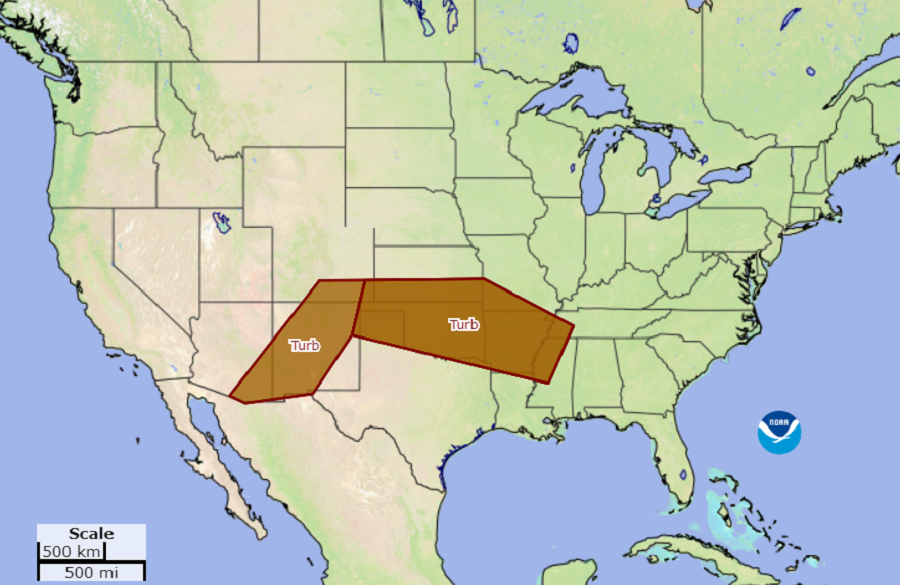
It’s a bumpy day for air travel across the country again; the National Weather Service’s Aviation Weather Center has issued two “SIGMET”s for severe turbulence over the United States. Once SIGMET is up over southern Arizona, much of New Mexico, and southern Colorado; the other is up over northern Texas, all of Oklahoma, southern Kansas and Missouri, all of Arkansas, and northwestern Mississippi. These alerts would impact many passengers on trans-continental routes and those traveling to places like Phoenix, Dallas, New Orleans, and Kansas City.
A SIGMET advises of weather, other than convective activity, that is potentially hazardous to all aircraft. SIGMETs are typically issued for the continental United States and adjacent coastal waters for severe icing, severe or extreme turbulence, dust storms and/or sand storms lowering visibility to below 3 miles, or volcanic ash. These SIGMET items are considered to be widespread because they must be affecting or be forecast to affect an area of at least 3000 square miles at any one time. However, if the total area to be affected during the forecast period is very large, it could be that only a small portion of this total area would be affected at any one time. SIGMETs are issued for 6 hour periods for conditions associated with hurricanes and 4 hours for all other events. If conditions persist beyond the forecast period, the SIGMET is updated and reissued. Convective SIGMETs are issued hourly for thunderstorm-related aviation hazards.